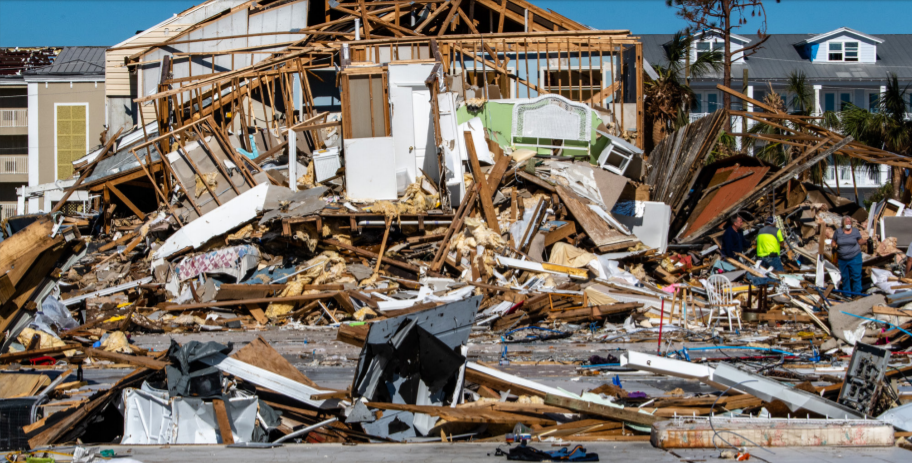How to Achieve More Resilient Building Codes




Many jurisdictions in the Pacific Northwest are grappling with the challenge of strengthening buildings to make them more resilient to extreme weather events or other disasters.
Despite massive rebuilding efforts following recent floods and wildfires that have devastated communities, recovery efforts have been painfully slow, and many homeowners and businesses have been left without the resources needed to recover or rebuild.
More comprehensive disaster prevention perspectives are needed to enable communities to withstand climate-related disasters’ increased frequency and severity. Strengthening our out-of-date building codes could play a decisive role in this regard.
Building codes focus on minimum design and construction standards to save lives and prevent damage from fires, floods, and other weather-related extremes. Long-term resiliency has not been a paramount consideration in the past.
Escalating disaster recovery costs and a growing crisis in insurability have changed everything, forcing governments at all levels to scramble for solutions to protect homeowners, businesses, and devastated communities from total collapse. Resiliency in design and construction has become the new imperative.
Legislators are often considered the primary targets for representations to change building codes or related regulations. However, long before substantive proposals are tabled, many other stakeholders must be engaged and committed to supporting such changes.
These include local and state officials, construction industry professionals, insurance providers, community and environmental organizations, and the general public. For many of these stakeholders, the debate often boils down to one concern: Will more rigid building codes cost more?
There is no simple answer to this question. More resilient buildings have been proven to withstand extreme weather events and cost less to repair. (See below) But this does little to prompt expenditures today for homeowners or developers already hard-pressed financially.
Natural Hazard Mitigation Saves: 2019 Report https://bitl.to/45Jz
Building coalitions among the many players and stakeholders is essential, and they must be updated on the benefits of transitioning to more resilient business practices. There will be resistance to change, so understanding and countering the factors motivating such resistance is essential.
The construction industry, for example, might resist due to increased costs, so the plan needs to address its concerns through phased implementation, incentives in the approval process, or subsidies. Public opinion is also a critical factor. Legislators are more likely to act if the public is aware and supportive of measures to reduce risks from weather-related disasters.
Communication strategies are crucial, and messages should be tailored to different audiences. Legislators must hear about economic benefits, public safety, and long-term savings. The public messaging should emphasize the protection of homes and families.
So, how can we mobilize a consensus for change that will lead to more robust standards in the design and construction of infrastructure and buildings in our cities and towns? Here are some guidelines that change agents should consider when developing a strategic plan to upgrade building codes.
- Objectives and Mission
Be clear in stating your objective and ensure all parties understand what you are trying to achieve. One example is: “To Advocate for adopting and enforcing updated building codes that enhance resilience to extreme weather and natural disasters, reducing long-term economic and social costs.”
- Stakeholder Engagement
Build a Coalition: Partner with environmental NGOs, insurance companies, engineering associations, emergency management agencies, and community groups. Engaging key industry players is essential. Address construction sector concerns through dialogue, emphasizing phased implementation and cost-sharing opportunities. Mobilize grassroots support via local leaders and disaster survivors to highlight community needs.
- Research & Data Collection
Risk Analysis: Identify vulnerabilities using FEMA flood maps, climate projections, and insurance data. Economic Case: Highlight cost-benefit analyses (e.g., $6 saved per each $1 invested in resilience). Success Stories: Showcase examples such as Florida’s post-Hurricane Andrew codes or California’s wildfire-resistant standards.
- Policy Development
Prepare draft legislative proposals. Draft adaptable codes with input from experts, incorporating climate resilience benchmarks. Regulatory Alignment: Ensure codes align with federal initiatives (e.g., FEMA’s Building Resilient Infrastructure and Communities). Champion Identification: Recruit bipartisan legislators from disaster-prone areas to sponsor bills.
- Communication Strategy
Tailored Messaging: Legislators: Emphasize fiscal responsibility, job creation in green construction, and voter safety. Public: Use social media campaigns and town halls to link resilience to family safety and property value. Media Outreach: Op-eds, press releases, and partnerships with weather agencies to underscore urgency.
- Legislative Advocacy
Direct Outreach: Schedule briefings with lawmakers, providing policy kits with infographics and district-specific data. Expert Testimony: Organize hearings featuring engineers, insurers, and disaster survivors. Grassroots Pressure: Encourage constituents to contact representatives via petitions and letter-writing campaigns.
- Incentives & Support Mechanisms
Financial Incentives: Propose grants/tax breaks for communities adopting codes; tie federal disaster aid to compliance. Training Programs: Fund workforce development for builders and inspectors to ease transition costs. Technical Assistance: Offer state/county-level support for code implementation and enforcement.
- Mitigating Opposition
Phased Implementation: Allow gradual adoption to reduce upfront costs for builders. Cost-Offset Proposals: Advocate for subsidies or low-interest loans for resilience upgrades. Public-Private Partnerships: Collaborate with insurers to offer premium reductions for compliant properties.
- Monitoring & Evaluation
Track Progress: Use a dashboard to monitor the adoption and enforcement of the legislative and regulatory codes. Impact Assessment: Post-disaster reviews to evaluate reduced damage in compliant areas. Adaptation: Adjust strategies based on feedback and emerging climate trends.
- Sustainability & Long-Term Integration
Policy Linkages: Integrate codes with broader climate adaptation plans and net-zero goals. Continuous Engagement: Maintain coalition activity post-adoption to address updates and compliance. Public Education: Ongoing campaigns to normalize resilience as a cultural priority.
- Timelines
Timelines are important. Short-term actions like coalition building and research, medium-term like policy drafting and initial outreach, and long-term for implementation and evaluation. Short-Term (0–6 Months): Coalition formation, data compilation, and initial legislator outreach. Medium-Term (6–18 Months): Bill drafting, hearings, and pilot incentive programs. Long-Term (18+ Months): Full legislative push, implementation support, and impact evaluation.
- Funding & Resources
Seek grants from climate foundations, partner with universities for research, and leverage in-kind support from coalition members. In short, your plan must combine evidence-based advocacy, strategic partnerships, and public engagement to drive legislative action and ensure safer and more sustainable communities.
- Monitoring Results
Finally, monitoring and evaluation are essential to track progress or adjust strategies as needed. Strengthening building codes to lower the risks of property damage or loss of life from disasters is a long and complicated process with many moving parts. Having a clear and well-documented strategic plan is crucial for success.
Also, changes of such magnitude will not happen overnight, and adjustments in planning, designing, financing, and new construction or retrofitting will take time. But in the final analysis, doing nothing is not an option.
____________________________
The Pacific Northwest Building Resilience Coalition represents thousands of private companies committed to improving planning, development, and the construction of homes, buildings, communities, and associated infrastructure capable of surviving, recovering from, and adapting to the growing impacts of natural disasters, climate change, and an ever-evolving urban and physical environment.
In partnership with the Pacific Northwest Economic Region (PNWER), the Coalition is Working on a multi-year Designing for Resilience initiative that will help create a more resilient and sustainable infrastructure by protecting the lives, property, and economic well-being of Pacific Northwest residents against potential hazards, both natural and man-made. Strengthening Building Codes to be more resilient is a significant element of this initiative.
_________________________________
Recent Posts
Building Resiliency in the Pacific Northwest
In the Pacific Northwest, the increasing frequency and severity of climate-related disasters, such as wildfires,…
How California can rebuild safer, more resilient cities after wildfires
The catastrophic LA wildfires were a powerful reminder that governments and communities need to think…
Mobilizing Resilient Design and Construction
Implementing a multifaceted strategy can motivate state and local governments to prioritize resilient design and…
Insurance Pricing: Navigating a New Era of Risk
The growing frequency and severity of climate-related disasters present a significant challenge for the insurance…
Designing for Resilience … It’s A Must
We see far too often structures built to current code that lack planning and design…
What are the Real Benefits of Designing for Resilience
While designing for resilience requires initial investments, the long-term payoffs often far outweigh these costs.…


